HEAL Technology:
The next generation of antithrombogenic coating.
The HEAL Technology mimics the final step of natural haemostasis and thus the conversion of fibrinogen (by thrombin) to fibrin. The controlled growth process results in a thin and fully polymerised network of fibrin with additional covalently bound heparin molecules. This composition of the HEAL Coating results in the antithrombogenic and endothelialisation-promoting properties that are essential for the rapid healing of an intracranial device.
Fibrin passivates the surface so that the implant is not perceived as a foreign body and neither inflammatory nor coagulative processes are triggered. Passivation thus leads to a significant reduction in thrombogenicity. At the same time, the fibrin network forms an ideal scaffold for surrounding endothelial cells and thus supports endothelialisation and healing of the implant
in the vessel.
Imaging of fibrin network on glass surface using Atomic Force Microscope (AFM).
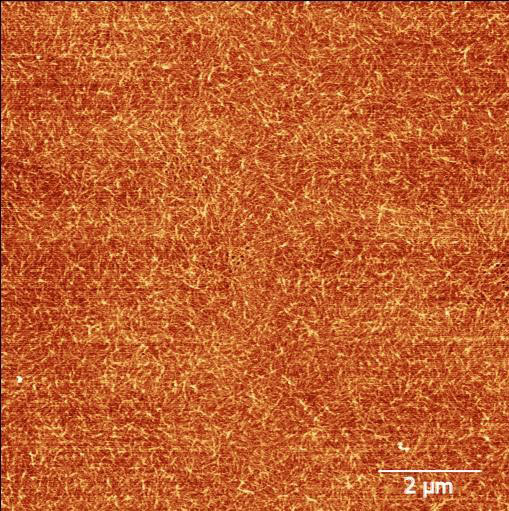
The covalently bound heparin reduces platelet activation and activation of the coagulation cascade. Thus, heparin also contributes to the antithrombogenic property of the HEAL Coating and thus of the device.
The HEAL Coating or components of the coating are not released into the system after implantation of the device. Thus, the coating is not eluted and has no pharmacological effect.
The HEAL Technology is applied to both laser-cut and braided devices from Acandis:
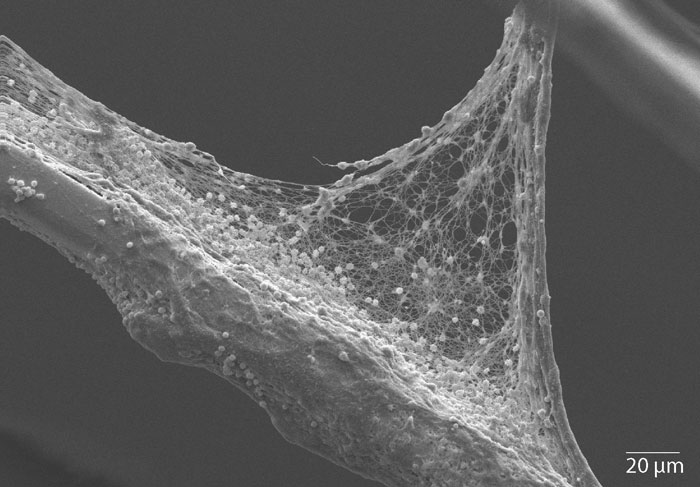
Lasercut stent
without HEAL coating
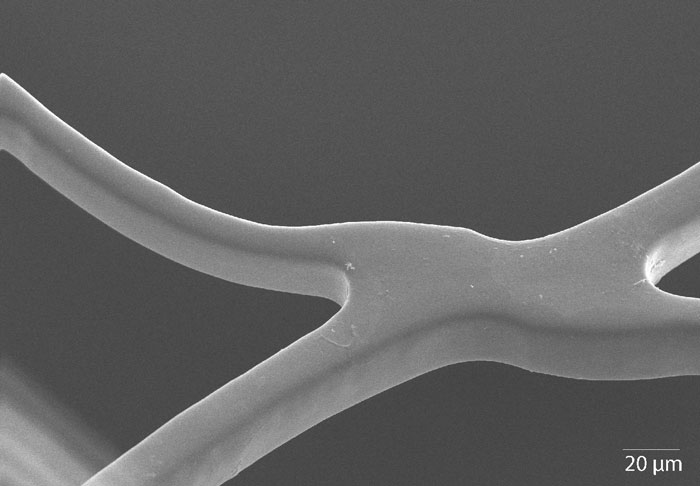
Lasercut stent
with HEAL coating
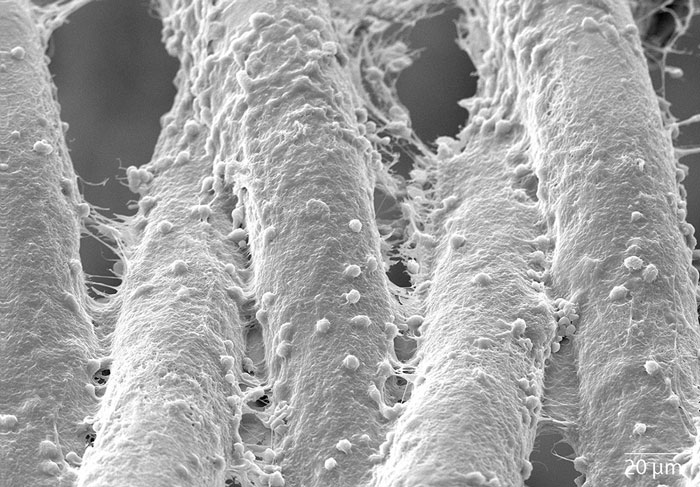
Flow Diverter
without HEAL coating
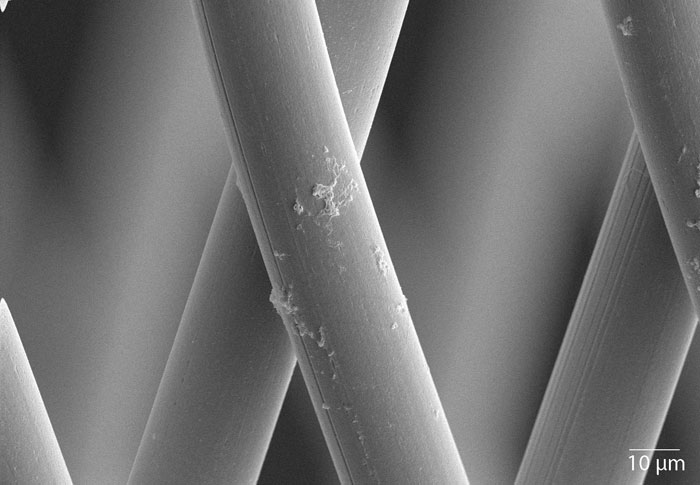
Flow Diverter
with HEAL coating
Images of laser-cut and braided (flow diverter) devices without and with HEAL coating after blood contact using scanning electron microscope (SEM). Images were taken after in vitro hemocompatibility study in Chandler Loop
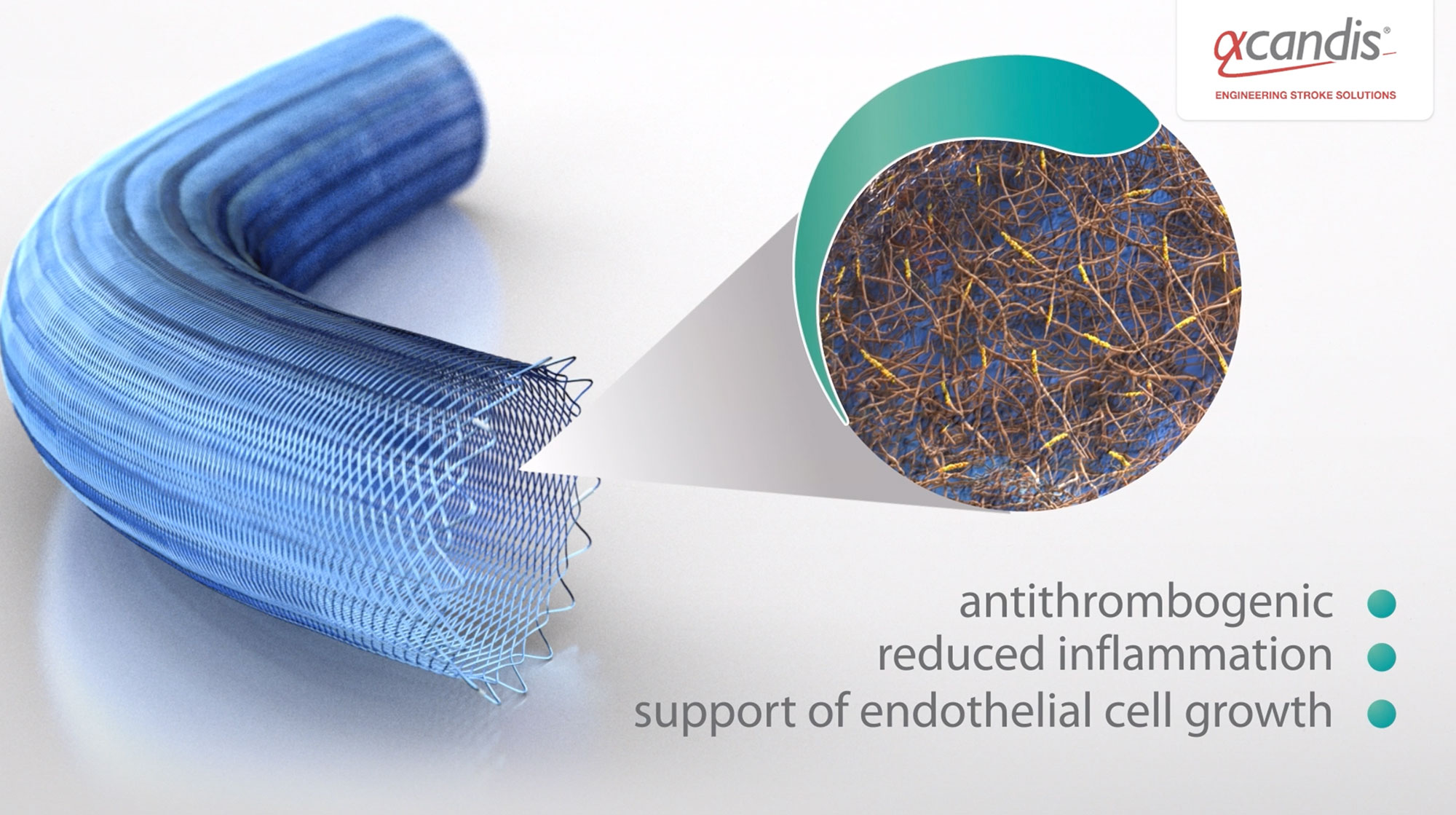
Schematic illustration of the HEAL coating.
brown: fibrin network, yellow: heparin
Sie sehen gerade einen Platzhalterinhalt von Standard. Um auf den eigentlichen Inhalt zuzugreifen, klicken Sie auf den Button unten. Bitte beachten Sie, dass dabei Daten an Drittanbieter weitergegeben werden.
Weitere Informationen